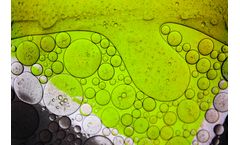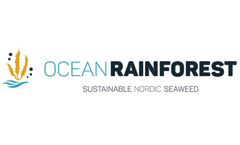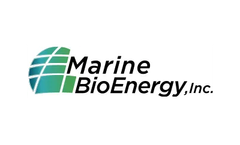Macroalgae Articles & Analysis
18 articles found
Algae produce about 70% of the oxygen in the atmosphere, and they can be mainly classified as microalgae and macroalgae. What Can Algae Do? Single-celled microscopic algae are called microalgae and multicellular filamentous, membranous, tubular, or foliar plants are called macroalgae, which are autotrophic oxygen-releasing plants. ...
In Far East, longlines of seaweed – also known as macroalgae – is a common sight at the surface of the sea, however, seaweed cultivation is still at a modest level in Denmark and in Europe.. ...
MacroSystems’ goal is to demonstrate that the harvested macroalgae will contain five times the amount of energy relative to the amount of energy required to produce the biomass product. ...
A widely available but underutilised Nordic bio-resource is macroalgae (seaweed). Traditionally, macroalgae have been used for many years in the feed and food industry as binders (hydrocolloids extracts) and macroalgae can also be used as partial replacement in food and feed products, as proteins, oils, vitamin & mineral mixes, antibiotics, ...
The purpose of MacroBiotech was to continue development - and prove the technical and commercial viability - of a concept for macroalgae cultivation in the open ocean. Cultivation was here used in the broadest sense and encompasses seeding, cultivation, harvesting and bio-refining. ...
The European seaweed – or macroalgae - industry relies on wild harvest and growth is limited by ecological sustainability considerations. But large scale macroalgae cultivation can satisfy this demand. However, macroalgae cultivation needs increased knowledge and understanding of seasonal variation of growth rates and biological content ...
Ocean Rainforest Sp/F is leading the case study: Sustainable offshore macroalgae cultivation. This case study aims to further develop the cultivation and processing capacity at Ocean Rainforest and identify possibilities for expansion of macroalgal production in other areas of the Atlantic Ocean. ...
This is a production platform that covers the whole technological chain for processing sustainable cultivated macroalgae biomass – also known as seaweed – to highly processed value added ...
Once harvested, seaweed, also known as macroalgae, could potentially be turned into various forms of energy, such as biogas and ethanol, through different chemical processes. ...
In the present work, Iridaea cordata (IC), a red marine macroalgae, was used as an efficient biosorbent for the removal of crystal violet (CV) and methylene blue (MB) dyes from aqueous solutions. ...
The ability of Sargassum hemiphyllum to remove methylene blue (MB) from aqueous solution was evaluated. Batch experiments were conducted to examine the effects of parameters such as initial pH, contact time, biomass dose and initial dye concentration on adsorption capacity. S. hemiphyllum before and after MB adsorption was characterized by Fourier transform infrared spectroscopy (FT-IR), ...
Sargassum swartzii, marine macro brown alga, showed a high malachite green (MG) biosorption capacity in batch mode of operation. The analytical evidence from Fourier transform infrared spectra confirmed the involvement of amine group in the biosorption of MG and electrostatic interaction type of mechanism was proposed to occur between the amine group of dye and the cationic MG dye ...
Multiple types of algae, including microalgae, cyanobacteria, and macroalgae are of interest. The request is only for information that may be used by DOE to support program planning and is not a funding opportunity announcement. ...
In particular, amphipoda showed a composition connected with macroalga development. During the warm season, macroalgae underwent degradation processes and this caused the presence of high abundance of opportunistic species and species connected to perturbed sediment. ...
The results showed that kelp influences the abundance of other macroalgae and benthic invertebrates, including species exploited by the local fisheries. ...
However, even if production in macroalgae has been extensively investigated, especially in iMminaria species (Davison et al. 1991; Drew 1983a,1983b; Dunton and Jodwalis 1988; Gerard and Du ISois 1988; Hatcher 1977; Sakanishi et al. 1991) using a variety of techniques, none of these methods is very satisfactory, with each of them presenting its own disadvantages. ...
The ability of red (Corallina officinalis L., Porphyra columbina) and green (Codium fragile) marine macroalgae to remove Cd(II) ions from dilute aqueous solutions, mimicking wastewaters with low metal concentrations, was explored. ...
The results may diverge in summer when floating macroalgae are more evenly distributed, with FVM tending to underestimate TMSC. FVM is in any case of potential interest for monitoring studies.Keywords: environmental monitoring, macroalgal biomass estimate, opportunistic macroalgae, Orbetello lagoon, remote sensing, macroalgal standing crops, shallow water, ...







